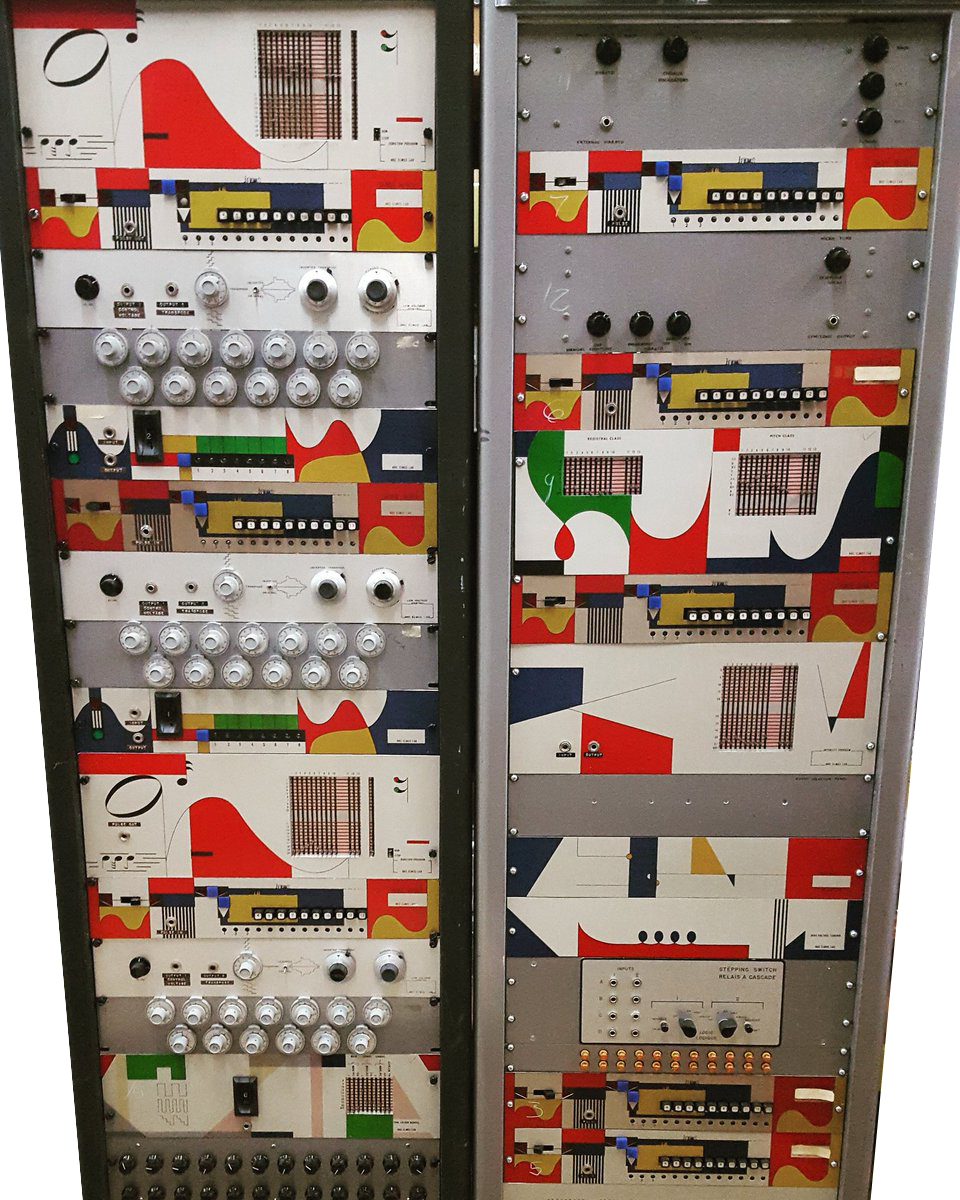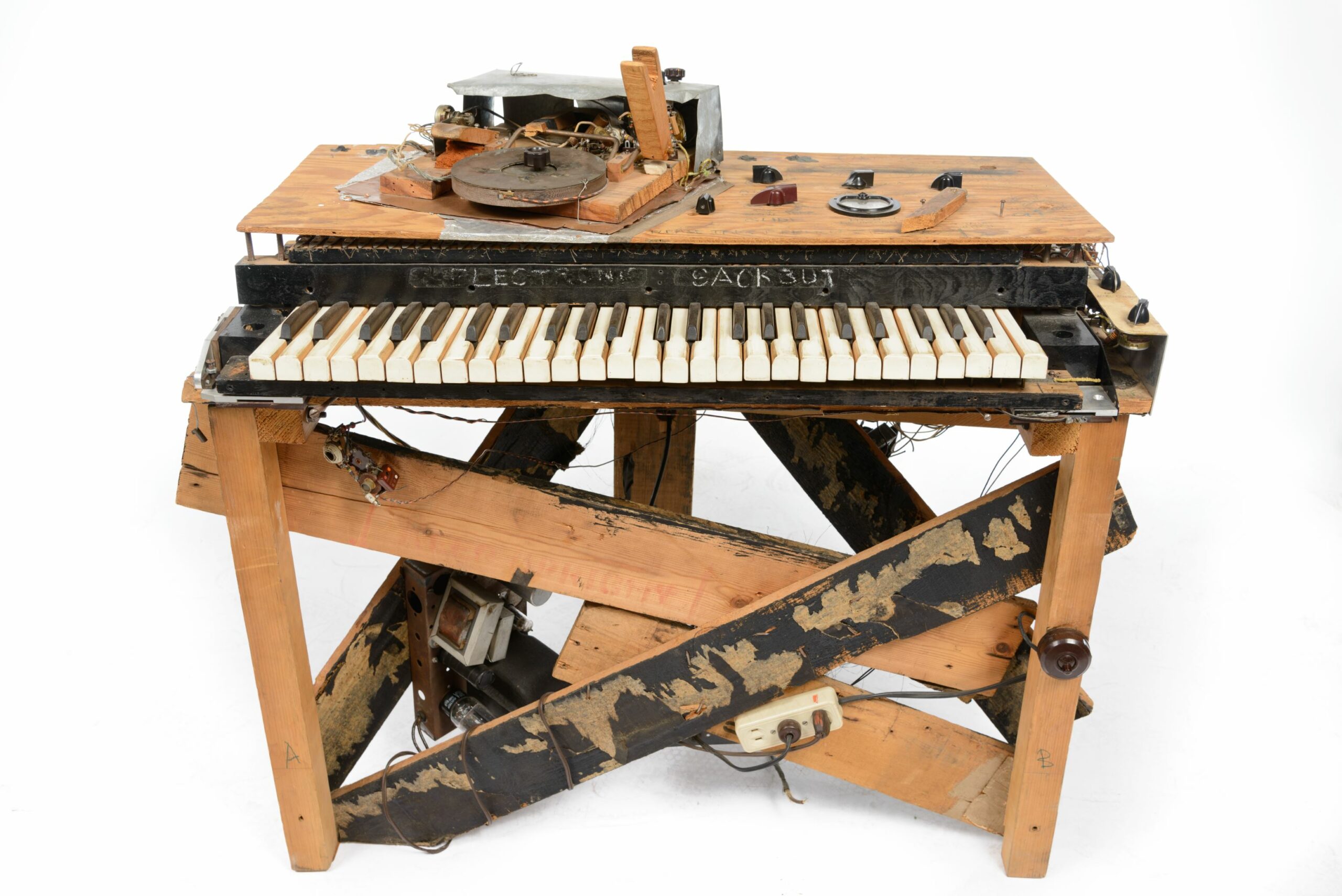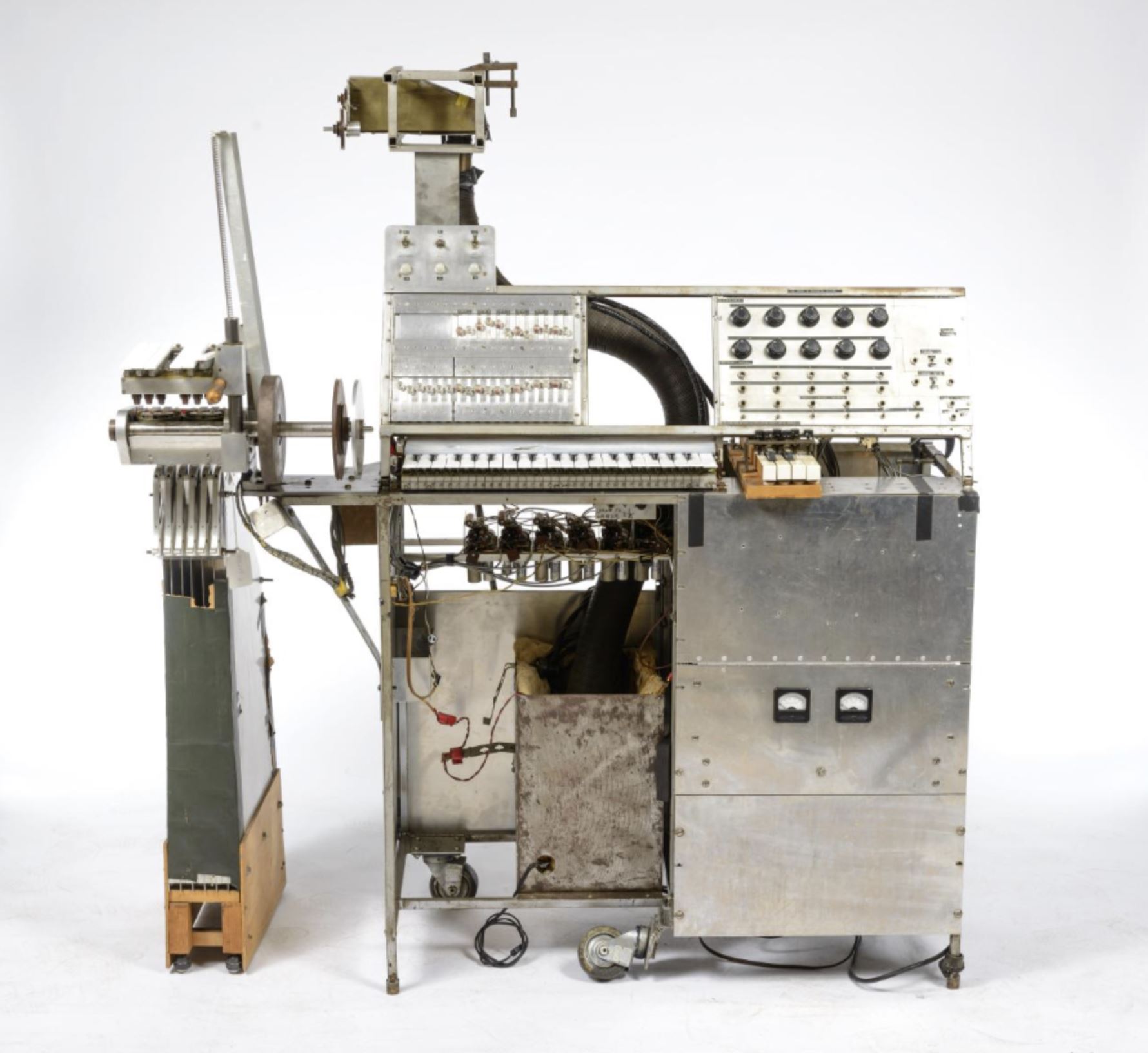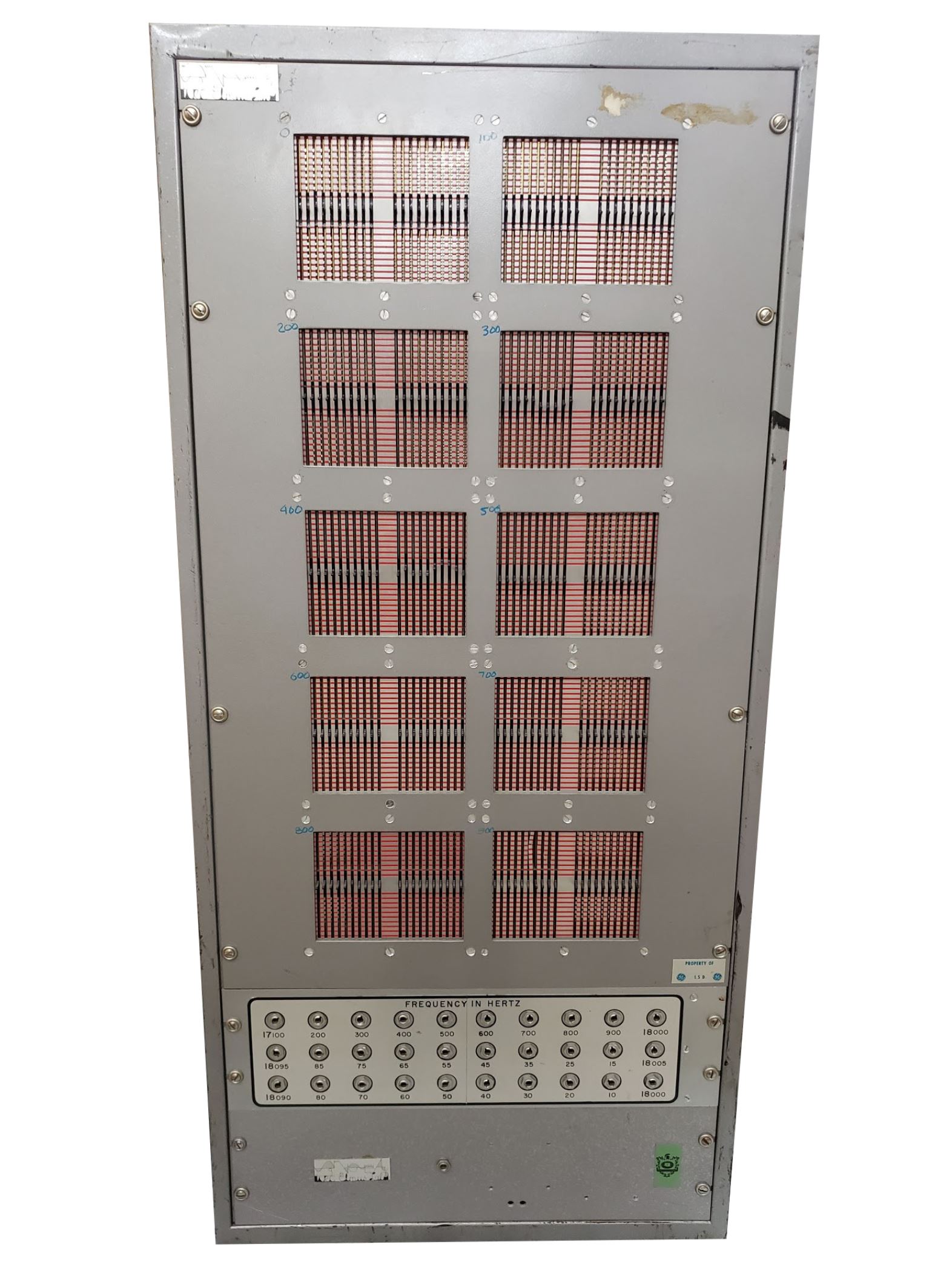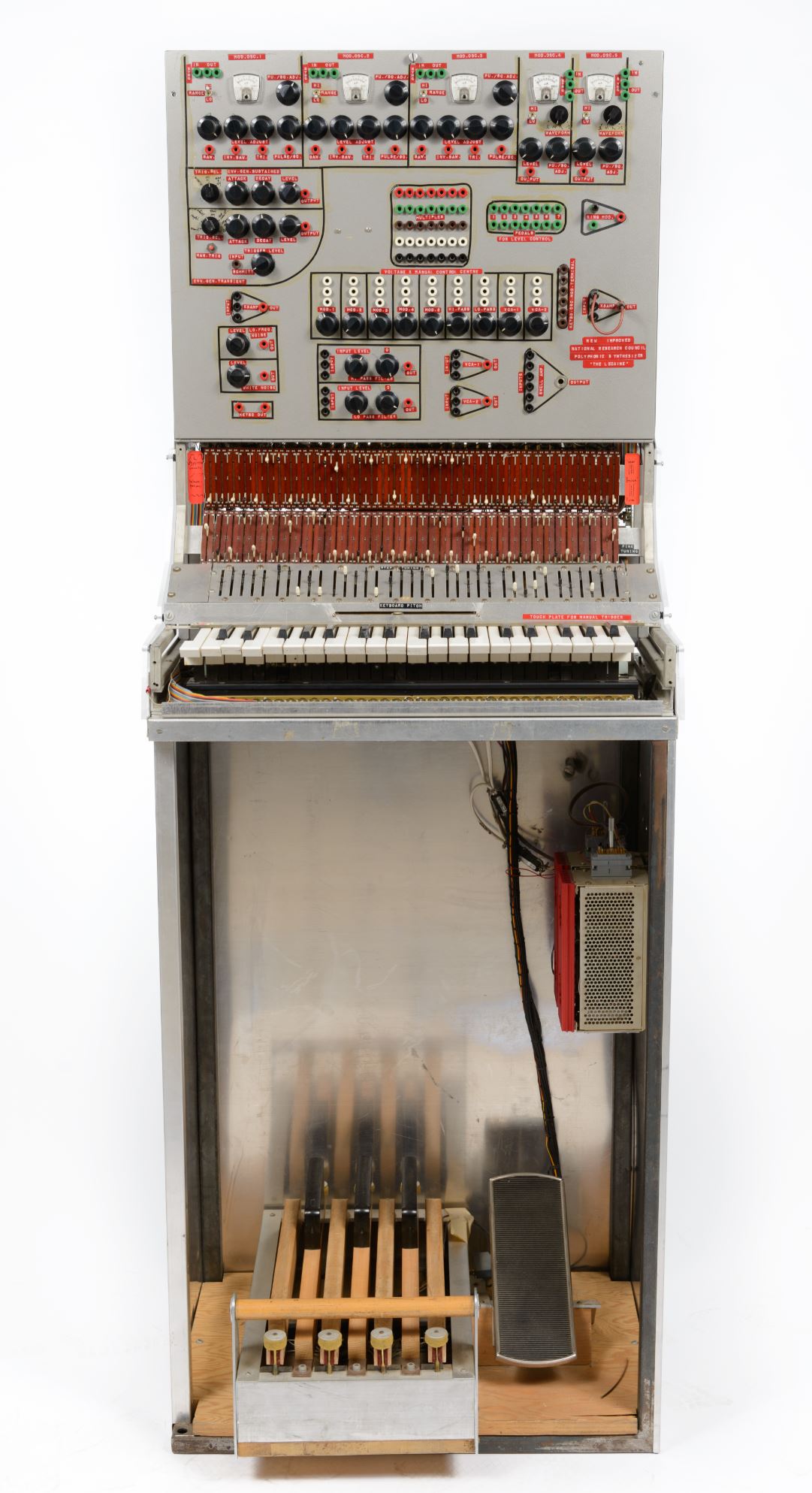Collection
Midcentury Electronic Musical Instrument Design
The Hugh Le Caine Collection
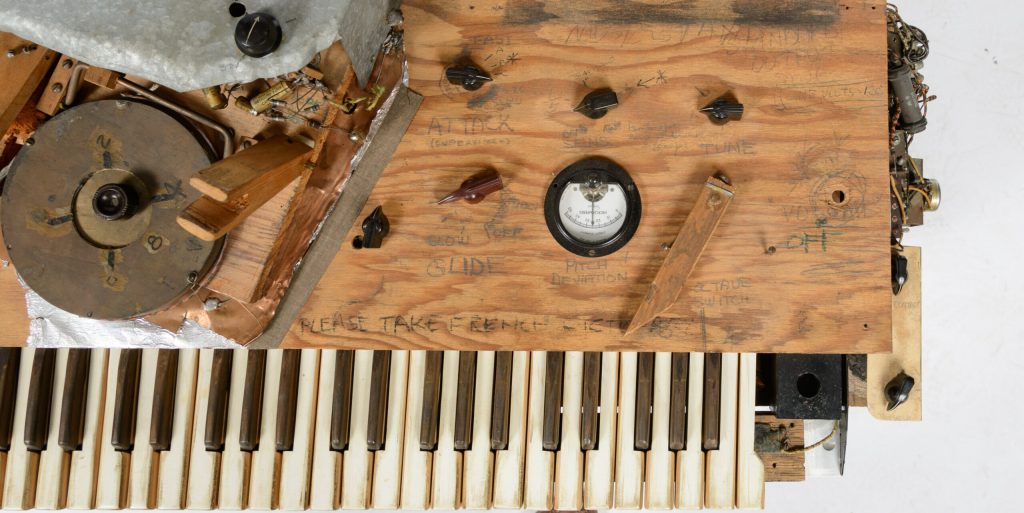
Collection Items
Midcentury Electronic Musical Instrument Design
The Hugh Le Caine Collection
written by Tom Everrett and Gayle Young
The Hugh Le Caine Collection consists of twenty-two electronic music instruments and related artifacts representing Le Caine’s work as a physicist, instrument designer, and composer in Ottawa, Canada. The collection is held by Ingenium – Canada’s Museums of Science and Innovation. Ingenium oversees three of Canada’s national museums: Canada Science and Technology Museum, Canada Aviation and Space Museum, and Canada Agriculture and Food Museum. It is located in Ottawa, Canada.
Hugh Le Caine was a pioneering force and major influence in the field of midcentury electronic musical instrument design. Like other electronic music innovators of this period—among them Edgard Varèse, Raymond Scott, Robert Moog, and Daphne Oram—Le Caine was interested in exploring the sonic and compositional potentials of electronic technologies. Between 1945 and 1974, he developed some of the world’s first voltage-controlled musical instruments, composed a number of classic electronic music pieces, and consulted on the design of four of Canada’s earliest electronic music studios: the Electronic Music Lab at the National Research Council of Canada (ELMUS, Ottawa, 1954), University of Toronto Electronic Music Studio (UTEMS, Toronto, 1959), McGill University Electronic Music Studio (Montreal, 1964), and Queen’s Electroacoustic Music Studio (Kingston, 1970). Le Caine’s work as a musical instrument designer merged his knowledge of physics and music, resulting in a number of novel approaches to creating and experiencing electronically-produced sound.
The Hugh Le Caine Collection is comprised of experimental electronic instruments that vary in technical design, physical appearance, and musical purpose. It includes both performance-based instruments, like the Electronic Sackbut and Polyphone, and studio-based instruments, like the Special Purpose Tape Recorder and Sonde. His instrument designs also vary in complexity and scale: from single-function modules to composite instruments like the Serial Sound Structure Generator, to integrated modular electronic studio systems.
The artifacts in the collection are of international significance. The Electronic Sackbut is today recognized as the world’s first voltage-controlled synthesizer. The Polyphone was the world’s first keyboard-based polyphonic synthesizer. The Special Purpose Tape Recorder, with which Le Caine composed his classic electroacoustic work Dripsody in 1955, represents a major contribution to the genre of musique concrète, as well as a significant early step in the recognition of sampling as a unique form of musical expression. Others, like the Serial Sound Structure Generator and Sonde, demonstrate important breakthroughs in the application of electronic sound sequencing and additive sound synthesis, respectively, to the creation of new musical textures.
This collection not only showcases the breadth of Le Caine’s work in midcentury electronic instrument design, it also contains several examples of successive versions of the same instrument (such as four versions of the Special Purpose Tape Recorder). In addition to instruments, it also includes some of the earliest known electronic synthesizer performances captured on disc (Electronic Sackbut recordings c. 1946) as well as operation manuals and other archival materials from his career at the National Research Council of Canada. Overall, this collection captures the life’s work of one of the most important, if quietly modest, influences on twentieth-century electronic musical instrument design.
History:
The first instrument in the Le Caine Electronic Musical Instrument Collection was the Electronic Sackbut prototype, acquired by Ingenium (then called the National Museum of Science and Technology) from the National Research Council of Canada (NRC) in 1975. The instrument was built by Le Caine at his home between 1945 and 1948, and then transferred to the NRC to mark the start of the Electronic Music (ELMUS) Lab in 1954. The goal of the ELMUS Lab was to explore the technical and commercial potential of electronic instrument design. The ELMUS Lab was established under the NRC’s Radio and Electrical Engineering Division, of which Le Caine was already an employee, and remained in operation from 1954 until Le Caine’s retirement in 1974. All of the electronic musical instruments developed by Le Caine during this period were designed and built at the ELMUS Lab, often for—or in collaboration with—composers at other research institutions, including the University of Toronto, McGill University (Montreal), and Queen’s University (Kingston).
The acquisition of the Electronic Sackbut prototype in 1975 marked Ingenium as the natural home for future donations of Le Caine-related instruments and equipment. Over the next two decades, as the electronic music studios in Toronto (UTEMS), Montreal (McGill Electronic Music Studio), and Kingston (Queen’s Electroacoustic Music Studio) upgraded their facilities or changed directions, further donations were made to Ingenium—the last being the Touch Sensitive Organ (1956–57) by the National Research Council of Canada in 1994. There are currently no known Le Caine instruments in public collections around the world, though there are a few instruments known to be in the hands of private Canadian collectors.
Important Themes:
Electronic sound research in the mid-twentieth century: The instruments in this collection represent applied experimental research toward developing innovative methods of electronic sound creation and control. They offer a close look at technologies employed in the emerging field of electronic musical instrument design and creation at a time when this art form was unfamiliar to most musicians and listeners. Le Caine’s instruments used analogue technologies in which continuous signals are shaped by changes in voltage. Each instrument provided a different approach to sound creation, and significant attention was paid to the creation of intuitive control systems that would be useful to musicians that were not trained in acoustics. Approaches ranged from more familiar keyboard-based instruments to abstract controllers such as the sliders on the Sonde, which allowed the user to create sound textures rather than melodies and harmonies by manipulating comparative volumes of 200 sine waves at once.
Cross-pollination of scientific and musical instrument design: As a research physicist, Le Caine developed innovative technologies for use in atomic physics, radar, and microwave radio transmission. His musical instrument designs were directly related to his experience as a physicist at the National Research Council of Canada, and in some cases he transposed the operations of existing technologies into the frequency range of human hearing. The connection between sound and science was central to Le Caine’s work, and is reflected both in the physical design of the instruments and his scholarly publications explaining their design and intended use.
Influence of experimental and studio-based practices on the wider public: The instruments in this collection bring together studios and people across four sites that had a major influence on generations of instrument designers, composers, and students in Canada and internationally. They demonstrate the practical nature of Le Caine’s approach to electronic sound creation and manipulation, and establish his material-based approach in music education and innovative music composition. While many of the instruments and people represented in this collection are not as widely known to the public, they nevertheless had a significant influence on those that are more commonly known.
© 2015 – 2025 Humboldt-Universität zu Berlin

